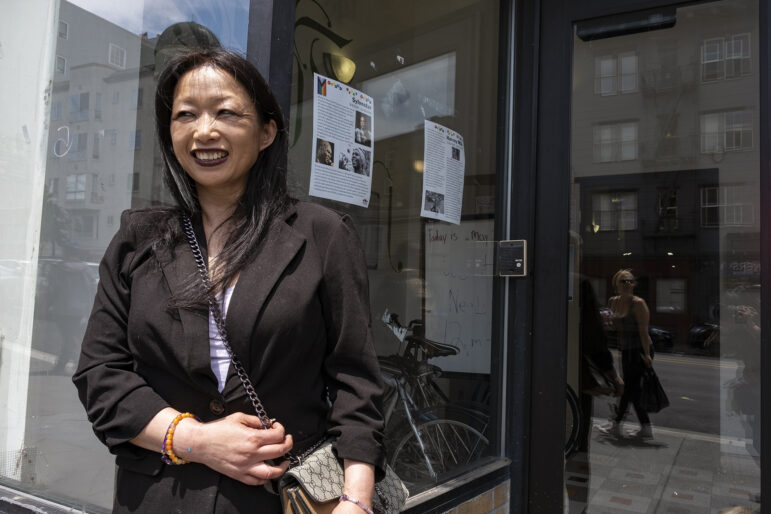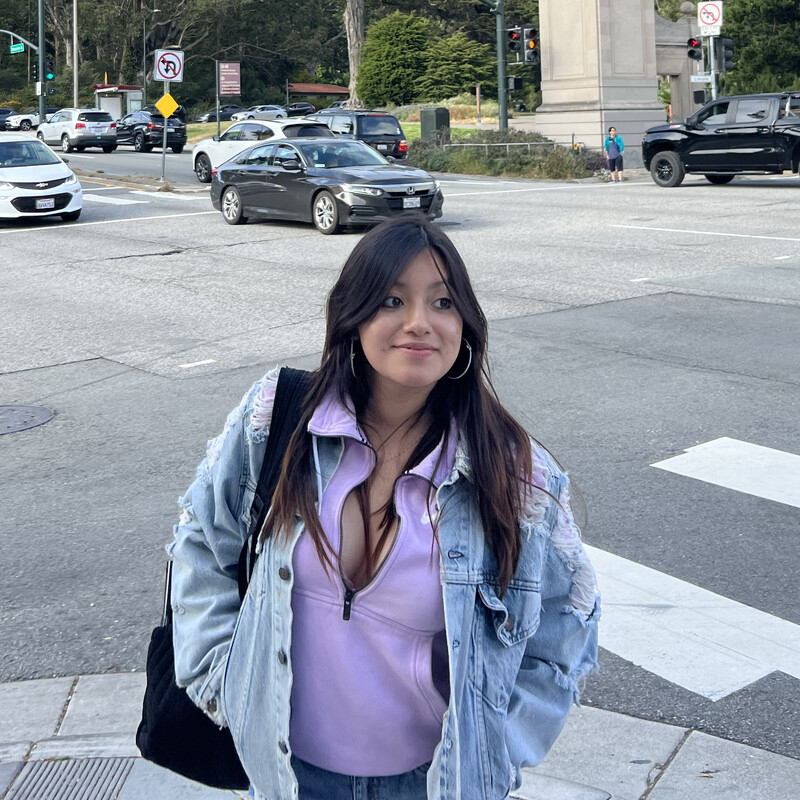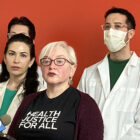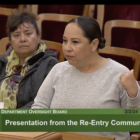This article is adapted from an episode of our podcast “Civic.” Click the audio player below to hear the full story.
Experts in overdose prevention say many teen and adult lives could be saved if more people know how to identify and respond to overdoses. In San Francisco, an array of programs are providing overdose response training to teenagers, college and graduate school students, and residents in neighborhoods that have a high rate of overdose deaths.
Fentanyl-related teen overdose deaths nearly tripled nationally from 2019 to 2021, according to the Centers for Disease Control and Prevention. And two-thirds of those who died had someone nearby who did not provide an overdose response.
In Episode 6 of the podcast series, “The Grassroots Effort to Save Lives: San Francisco and the Overdose Crisis,” we find out why students are choosing to learn how to reverse overdoses. And we drop in on a training session to find out how it’s done. Read our previous coverage on this storyline.
Now, some San Francisco high school students are trying to help by volunteering for a program that trains them to recognize drug abuse and reverse overdoses.
Among them is 17-year-old Burton High School student Jennifer Mendoza.
“I think it’s really important, especially in our school and at my age, that we should be teaching our students how this is performed,” Mendoza said.
The program, called Public Health Youth Corps, is run by FACES for the Future Coalition, which offers underprivileged youth a pathway toward a career in health care. It includes a healthcare innovation called mental health first aid, according to coalition Deputy Director Brooke Briggance.
“It’s in some ways kind of like CPR,” Briggance said.
Addressing psychological health is a key part of mitigating drug-related deaths among teenagers since more than 40% of teens who died of overdose from 2019 to 2021 had a history of mental health conditions, according to the CDC.
Through the program, students learn the early signs of various mental health challenges, how to approach conversations with individuals who may be suffering, and how to follow a trajectory of de-escalation in the event of worsening stages such as a panic attack, non-suicidal self-injury or thoughts of suicide.
Briggance said the students who volunteer for the training are passionate about mental health and substance use disorder because they routinely encounter these challenges in their personal lives.
“Many of them have seen overdose on the streets, in the neighborhoods in which they’re walking to school or hanging out with their friends,” she said. “Some of them have lost family members to overdose.”
Mendoza said if she had learned these skills earlier, she might have been able to help a friend whom she fears may have died of an overdose.
“We’re not really sure where they are right now but we have a feeling that they’re not here because they did a lot of drugs,” she said. “I feel like if I was more educated at that age, I could have helped him or found help.”
Some local university students are also getting involved in overdose reversal training. This year, a new California state Senate bill required that all community colleges and universities provide opioid overdose education and distribute Naloxone. Maia Scarpetta and Rachel Murro, both PhD students at UCSF, organized drug reversal training for the UCSF community by enlisting the help of National Harm Reduction Coalition’s Drug Overdose Prevention and Education Project — aka the DOPE Project — a 20-year-old harm reduction organization that has been featured in CDC reports for its innovative research and practices in community-based naloxone distribution.
“I don’t think that anybody living in SF is not in the presence of drug use, whether it’s your friends, your family, your neighbors, folks that you interact with on a daily basis,” Murro said.
“And I think a lot of us kind of intellectualize it and focus on it from a research perspective, or we’ll learn all the facts we can, but it’s like, what would we do if somebody was actually standing in front of us and needed our help? Which is not out of the realm of possibility at all.”
The UCSF training event drew more than 150 people who packed an auditorium.
[ Learn how to reverse an overdose by watching “How to Use Narcan with the DOPE Project.”]
The DOPE Project is also spearheading a groundbreaking initiative that trains permanent supportive housing residents as peer overdose responders. When shelter-in-place initiatives were enacted during the height of the COVID-19 pandemic, people experiencing homelessness were moved into hotels and supportive housing where the risk of overdose increased significantly for drug users due to the decreased likelihood that an acquaintance or bystander could respond.

Yesica Prado / San Francisco Public Press
In her role as an overdose peer responder, Susan Lefever is tasked with saving the lives of her friends and neighbors at The Minna Lee, a 50-unit supportive housing building in the San Francisco’s Tenderloin neighborhood.A San Francisco Chronicle analysis found that of the approximately 650 people who died of accidental overdoses in the Tenderloin and nearby Sixth Street corridor between January 2019 and August 2022, more than 40% died inside single-room occupancy buildings, also called SROs.
In response, the DOPE Project collaborated with the San Francisco Department of Public Health on an overdose prevention training program designed for people living in permanent supportive housing.
In February 2021, residents of two single-room occupancy buildings participated in the pilot — the Cadillac Hotel and The Minna Lee — in cooperation with buildings’ service provider, Delivering Innovation in Supportive Housing. The program installed inside the room of every resident an emergency button, which, when activated, sounded an alert on a peer responder’s phone so they could quickly respond and administer Narcan.
Responder Susan Lefever said the system works because residents tend to be distrustful of authority. So, if something goes wrong, they’re more likely to reach out to peers rather than building staff. She added that ever since she took on the role, she’s felt renewed pride.
“It feels like I’m useful, like I have a sense of purpose,” she said. “I’m not just one of the statistics in the SRO. I’m actually helping within the community.”
About the Series
As San Francisco continues to search for solutions for homelessness and overdose deaths, the Public Press’ “Civic” audio team is exploring the origins of these crises, what has been done to help and what might be making things worse.
Throughout our six-episode series, we are exploring what influenced rampant opioid addiction and its connection to homelessness, the 150-year history of policing and prosecuting drugs in San Francisco, the long battle to open a safe consumption site in the city and grassroots efforts to curb the tide of deaths.










